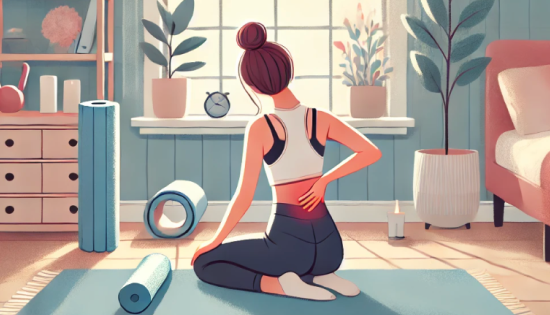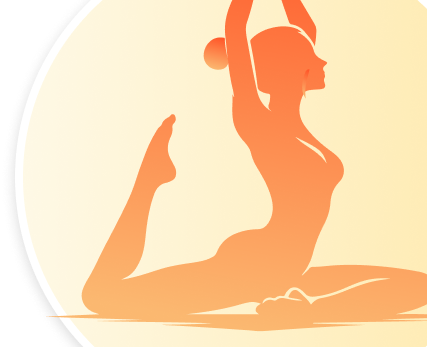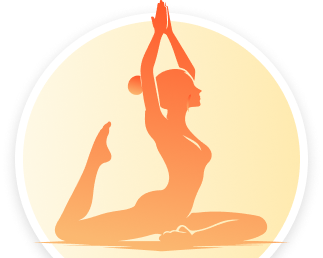Lower Back Pain Relief: At-Home Rehabilitation Exercises

Understanding and Relieving Lower Back Pain: At-Home Rehabilitation Exercises
Introduction: Causes of Lower Back Pain
Lower back pain is one of the most common ailments affecting millions of people worldwide. Whether you’re working long hours at a desk, aging, or staying active, lower back pain can strike anyone. Understanding its causes can help in treating and preventing it.
The lower back, or lumbar spine, bears much of the body’s weight and is often subjected to strain from poor posture, overuse, or injury. Conditions like muscle strain, herniated discs, or sciatica can lead to discomfort or even sharp, debilitating pain. In many cases, lower back pain can be alleviated through consistent rehabilitation exercises.
The good news is that you don’t need a gym or specialized equipment to relieve back pain. Simple at-home exercises, when done consistently, can help improve flexibility, strengthen core muscles, and provide much-needed relief.
Understanding Lower Back Pain
Before jumping into exercises, it’s essential to understand why lower back pain occurs. The most common causes of back pain include:
- Muscle Strain: Overuse, poor posture, or lifting heavy objects improperly can strain the muscles in your back.
- Herniated Discs: When the discs between your vertebrae slip out of place, they can press on nerves and cause pain.
- Sciatica: Pressure on the sciatic nerve, usually caused by a herniated disc, can cause sharp, radiating pain down the legs.
- Osteoarthritis: Degenerative changes in the spine can cause pain, stiffness, and reduced mobility.
While some causes of lower back pain are more complex and may require medical attention, many cases of mild to moderate back pain can be managed through exercises aimed at strengthening and stretching the back and core muscles.
Benefits of At-Home Rehabilitation Exercises for Lower Back Pain
Exercising at home offers several advantages:
- Convenience: No gym or expensive equipment is required—just your body and a little bit of space.
- Cost-effective: There’s no need to pay for physical therapy or gym memberships.
- Tailored to Your Needs: Customize routines based on your comfort level and goals.
- Prevention: Consistent practice can reduce the recurrence of lower back pain and prevent future injuries.
Essential At-Home Exercises for Lower Back Pain Relief
Here are seven proven exercises to alleviate lower back pain and strengthen muscles for long-term relief:
1. Child’s Pose
- How to Do It: Start on your hands and knees. Slowly sit back onto your heels, stretch your arms forward, and rest your forehead on the floor. Hold for 20–30 seconds, breathing deeply.
- Benefits: Stretches the lower back, hips, and thighs.
2. Knee-to-Chest Stretch
- How to Do It: Lie on your back with knees bent and feet flat on the floor. Bring one knee toward your chest, holding it with both hands. Hold for 20–30 seconds, then switch legs. Repeat 3–5 times.
- Benefits: Releases tension in the lower back and hips.
3. Glute Bridge
- How to Do It: Lie on your back with knees bent and feet flat. Tighten your core and lift your hips, forming a straight line from knees to shoulders. Hold for 5–10 seconds, then lower. Repeat 10–15 times.
- Benefits: Strengthens the glutes, hamstrings, and lower back.
4. Kneeling Back Stretch
- How to Do It: Kneel and place hands on heels. Extend hips backward, reaching arms forward, and drop your chest to the floor. Hold for 20–30 seconds. Repeat 3–5 times.
- Benefits: Stretches the lower back and improves posture.
5. Plank and Side Plank
- How to Do It: Hold a push-up position for 30–60 seconds. For the side plank, balance on one forearm and side of your feet. Hold for 30 seconds on each side.
- Benefits: Strengthens core muscles essential for spinal support.
6. Seated Spinal Twist
- How to Do It: Sit with legs extended. Cross one leg over and place the opposite elbow on the outside of the bent knee. Twist to the side, holding for 20–30 seconds. Repeat on the other side.
- Benefits: Improves spinal flexibility and alleviates tension.
7. Bird Dog
- How to Do It: On hands and knees, extend the right arm forward and left leg back, holding for 5–10 seconds. Switch sides. Repeat 10–12 times.
- Benefits: Improves balance and strengthens the lower back and core.
Simple Daily Routine to Maintain Progress
- Morning: Knee-to-Chest Stretch, Glute Bridge.
- Mid-Day: Child’s Pose, Seated Spinal Twist.
- Evening: Kneeling Back Stretch, Plank.
Preventing Future Lower Back Pain
- Maintain Good Posture: Keep your spine aligned while sitting or standing.
- Lift Properly: Bend at the knees and use your legs to lift objects.
- Stay Active: Regular movement strengthens spine-supporting muscles.
- Watch Your Weight: A healthy weight reduces pressure on the lower back.
Conclusion
Lower back pain doesn’t have to be a constant burden. With simple, consistent at-home exercises, you can relieve pain, improve mobility, and prevent future issues. Start your routine today and take the first step toward a healthier, pain-free back.
References
- Chou, R., et al. (2017). Nonpharmacologic Therapies for Low Back Pain: A Systematic Review for an American College of Physicians Clinical Practice Guideline. *Annals of Internal Medicine.* https://www.acpjournals.org/doi/10.7326/M16-2459
- National Institute of Neurological Disorders and Stroke. (n.d.). Low Back Pain Fact Sheet. https://www.ninds.nih.gov/health-information/patient-caregiver-education/fact-sheets/low-back-pain-fact-sheet
- Gordon, R., & Bloxham, S. (2016). A Systematic Review of the Effects of Exercise and Physical Activity on Non-Specific Chronic Low Back Pain. *Healthcare.* https://www.ncbi.nlm.nih.gov/pmc/articles/PMC4934575/
- American Physical Therapy Association. (n.d.). Physical Therapist's Guide to Low Back Pain. https://www.choosept.com/guide/physical-therapy-guide-low-back-pain
- Coulombe, B. J., et al. (2017). Core Stability Exercise Versus General Exercise for Chronic Low Back Pain. *Journal of Athletic Training.* https://www.ncbi.nlm.nih.gov/pmc/articles/PMC5293579/
- Bhadauria, E. A., & Gurudut, P. (2017). Comparative effectiveness of lumbar stabilization, dynamic strengthening, and Pilates on chronic low back pain: randomized clinical trial. *Journal of Exercise Rehabilitation.* https://www.ncbi.nlm.nih.gov/pmc/articles/PMC5667636/
- Searle, A., et al. (2015). Exercise interventions for the treatment of chronic low back pain: a systematic review and meta-analysis of randomised controlled trials. *Clinical Rehabilitation.* https://pubmed.ncbi.nlm.nih.gov/25681408/
- National Health Service (NHS). (n.d.). Back pain - Prevention. https://www.nhs.uk/conditions/back-pain/prevention/


 4 min read
4 min read




